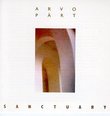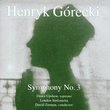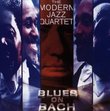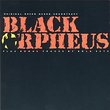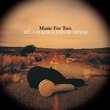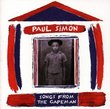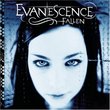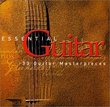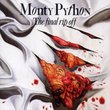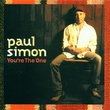| All Artists: Title: PART:TABULA RASA Members Wishing: 0 Total Copies: 0 Label: ECM Records Genres: Jazz, Classical Styles: Historical Periods, Modern, 20th, & 21st Century, Symphonies Number of Discs: 1 SwapaCD Credits: 1 UPC: 042281776427 |
Search - :: PART:TABULA RASA
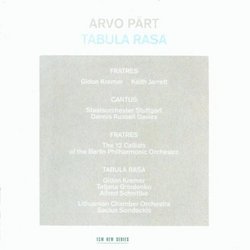 | PART:TABULA RASA Genres: Jazz, Classical
No Description Available. Genre: Jazz Music Media Format: Compact Disk Rating: Release Date: 16-NOV-1999 |
Larger Image |
CD DetailsSynopsis
Product Description No Description Available. Genre: Jazz Music Media Format: Compact Disk Rating: Release Date: 16-NOV-1999 Similar CDs
Similarly Requested CDs
|
CD ReviewsThe quintissential minimalist expression Alex TB | 10/13/2008 (5 out of 5 stars) "I was told several weeks ago that I was to do a presentation in my Music Theory class about a twentieth century composer. Arvo Pärt immediately came to mind as probably my favorite composer and perfect for the project. As much as I loved Pärt when I wrote the last review for the very same release of Tabula Rasa, I simply did not know him as well as I know him now. Part of this comes from having listened to Tabula Rasa fairly often up until last week, and then what happened to me last week. What happened was I acquired about fifteen Arvo Pärt releases in one weekend, both from a box set that I purchased called The Silence of Being (I'll get to that later, after I find the time to sit down and comb through the five disks carefully and be able to make an assessment) and various other releases from my local library. I have been completely immersed in Pärt for the past week, and I feel that I owe it to him and this album to take another shot at the review with my added knowledge and understanding. The 1984 release Tabula Rasa is the most popular and essential example of Arvo Pärt's minimalist tintinnabuli style. Although this is by no means a definitive collection of all of his best pieces of the style, the four recordings here have remarkable cohesion, and the presence of any one piece plays off of the others and brings out its best. It's no surprise that this album is so popular with music fans who are not attuned to classical music. Pärt has a knack for classical structure, but his tintinnabuli style is both focused on melodicism as well as texture. Perhaps the most obvious examples of the active working of this contrast are the two versions of Fratres collected here. The first features a fiery, raw solo violin part that represents entire chords at once in violent precision playing from Gidon Kremer, who seems to have little trouble with the complex bowing. The second version of Fratres is played by twelve cellists of the Berlin Philharmonic Orchestra, and this recording of the piece is alternatively subdued and more safe sounding, but no matter how you slice it or dice it, Fratres is a soaring, thoughtful, and sometimes spiritual piece. And Pärt is definitely a spiritual composer, although not really a religious, or Christian composer. Although many of his later, particularly choral pieces might reflect a religious theme lyrically, the aural spirituality is universal and accessible to all. Sandwiched between these two recordings is the collection's shortest and arguably most memorable moment, Cantus in Memory of Benjamin Britten. After a bell sounds off the beginning of the piece, a full orchestra cascades down over the constant pedal point of the bell like water over a cliff, or possibly like souls descending into the deep, in polyphonic parts. The downward moving strings get stronger and stronger, and then compound the dense sea of sound at the bottom. Before the piece has a chance to burn out, it cuts out, and is concluded by the same bell that started it. The word "cantus" has surely become synonymous with this piece as it is a perfect example of what kind of emotion a cantus should evoke. The collection is rounded off with a full performance of one of Part's most famous pieces, the twenty five minute long Tabula Rasa. The piece consists of two parts, which although are not separated in any way like on many other recordings, have unique enough ideas and emotions to make the distinction obvious. The first movement, Ludus, is a sprawling expansion on a single theme that grows in complexity with each repetition. Although the piece sounds something like more traditional European fiddle music at times, the harmonies are sublimely universal. Pärt's experimental flair also comes through here on flourishes of prepared piano, which run rampant in the booming conclusion. The second movement, Silentium, works opposite to Ludus by constructing a loose, polyphonic texture that delicately floats upwards into the stratosphere of the stringed instruments' fingerboards on a melancholic chord progression which also seems to reach for the sky. There is little actual melody, but this is considered one of Pärt's finest tintinnabuli moments and is a frequent pick along with Cantus in Memory of Benjamin Britten for favorite music of patients dying of terminal cancer or AIDS. Somewhere near the middle of Silentium, it sounds almost as if some ambient soundscape is vaguely introduced into the background. It might be a production trick, or perhaps even a nonexistent illusion of atmosphere, but it almost seems as if the song is ascending an icy, snowy mountain, as the air between the strings gets thinner and thinner. The piece finally fades gently into nothingness, a final equilibrium, a blank slate. It is no surprise that this is Pärt's most popular release to date. The pieces here are slowly seeping into popular culture; Fratres was featured in last years Academy Award nominated There Will Be Blood, Cantus in Memory of Benjamin Britten was featured in Fahrenheit 9/11, and Tabula Rasa was used in War Photographer. But this popular exposure does not mean that Pärt is a modern classical sellout, nor does it mean that Tabula Rasa is any less of a quaint release than it really is. All of these pieces mesh stylistically and represent a time of great inspiration in Pärt's career, and the collection stands up as a collection of four (or five, if you count the two Tabula Rasa movements as seperate) utterly unforgettable works." Music so good you'll cry R. Chatham | Los Angeles, CA | 04/21/2007 (5 out of 5 stars) "I first heard one of the songs playing in a Starbucks and had to ask them what it was... I couldn't hear it very well, but I knew I needed to hear more. After I got home and listened to the previews on Amazon, I was hooked. There is so much depth and sweetness to this music. It has literally brought me to tears. If you're looking for an album of chamber music that truely goes beyond the normal lulling sound and into the realm of true artistic expression, this is one to own. It is one of the prizes of my collection." A wonderful and intriguing labryinth Harry Ringel | Philadelphia, Pa USA | 02/29/2008 (5 out of 5 stars) "I found it impossible not to react on a variety of emotional levels to Part's music, especially Tabula Rasa. It almost demands feeling. It is also music whose complexities draw one continually to explore it. The more you listen, the more there is to find."
|

 Track Listings (4) - Disc #1
Track Listings (4) - Disc #1